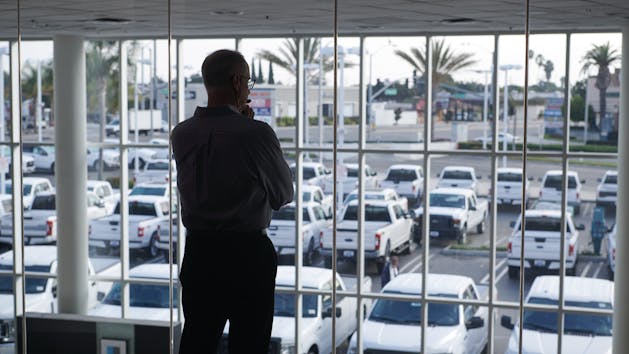Find the right solution for your business with our free Fleet Management Buyer’s Guide.
Do You Know the True Cost of Fleet Accidents?
Worker safety is of paramount importance to employers, employees and government authorities. When you consider that 5,071 workers died on the job in 2008 in the U.S. alone and that more worker deaths were caused by vehicle crashes than by any other incident type of accident, it is clear that fleet accidents can result in significant costs — not only financially, but emotionally as well.
Why are fleet drivers more vulnerable to vehicle accidents?
Most drivers in the U.S. travel between 12,000 and 15,000 miles every year, and according to statistics, these drivers have a 1 in 15 chance of being involved in an accident. Compare that with your average fleet driver, who will usually drive between 20,000 and 25,000 miles; you can see that fleet drivers face a greater chance of being in an accident. And when that accident happens on the job, it is a major concern for fleet managers.
It's imperative then that fleet managers take safety seriously and do what they can to reduce the likelihood of their drivers being involved in an accident.
The cost of fleet accidents
Not only are fleet drivers more likely to be involved in an accident, but the cost of that accident is likely to be higher as well.
Statistics from several years ago put the cost at $21,000 per incident, and those costs have probably risen in the interim. Costs to the company can include:
- Property damage
- Reduced productivity
- Missed revenue opportunities
- Third-party liability claims
Knowing the true cost of a fleet vehicle crash can help fleet managers appreciate the need to be more proactive about promoting driver safety.
What can you do to reduce the risk?
Of course, not all accidents are preventable. Sometimes drivers are simply victims of circumstance; they are in the wrong place at the wrong time.
However, there are measures you can take as a fleet manager and as a company to minimize the risk.
When hiring drivers it's important to know that personality influences how someone drives — A study on traffic accidents in the 1960s by prominent Canadian psychiatrist John Tillmann noted that there appears to be a “drive as you live” mentality; people with aggressive or headstrong characteristics often expressed them while driving and caused more accidents. Unfortunately, these qualities are also common in top sales people.
New drivers are far more likely to be involved in accidents. Whether it is due to an eagerness to perform well and rushing between jobs, or simply because of inexperience, studies found that drivers were most likely to have an accident in their first 18 months on the job. Review your hiring policy or enroll new staff in behind-the-wheel (BTW) driving courses. Make it clear that key performance indicators (KPIs) include safe driving, something you can measure using Verizon Connect.
Make it clear that management is committed to safe driving — Leading by example is important when initiating any change and when it comes to enforcing safe driving habits, since this process may mean overcoming years of bad habits. Management can make it clear they are committed to good driving by participating in safety programs themselves, allocating needed resources, and by rewarding drivers that meet safe driving KPIs.
Your drivers are not as safe as they think they are!
It is common for most drivers to overestimate their abilities. By keeping a clear historical record of your fleet's driving record you can not only reduce your insurance premiums by up to 15%, but you can also use that data to effectively train your staff.
For example, you may find that most of your vehicle accidents are “nose to tail” crashes. Perhaps your drivers are distracted, trying to multi-task while driving. It might pay to concentrate any training in this area to improve that particular weakness.
Using information collected by your Verizon Connect fleet management solution, along with education and training, can improve the level of driving skill among your fleet drivers. Making safety a top priority not only improves profitability and reduces operating costs, but also helps staff to take pride in having a safe driving record.
Find out how our platform gives you the visibility you need to get more done.




